Share Your Signup Form in All the Right Places
When setting up a signup form using the Form Builder in Mailchimp, you are provided with a unique URL that can easily be shared with others. To maximize your reach and gain more email subscribers, it’s a good idea to share this URL in a number of places including:
- Social media bios: Add your URL to your social media profiles and bios. This makes it easy for your audience to find and access your email signup.
- Social media posts: In addition to placing your link in your social media profiles, add it to individual posts, in the captions.
- Email signatures: By adding a link to your signup form in your email signatures, every email you send turns into an opportunity to generate more subscribers.
- Event listings and invitations: If you’re hosting an in-person event or a webinar, consider adding a link to your signup form in the invitation or event details. Your audience will appreciate having an easy way of staying informed on any upcoming events.
- Transactional emails: If you have a store, whether that be online, in-person or both, you likely send out confirmation emails or receipts once a product is purchased. Add your signup link to these emails to gain even more subscribers.
- Print material: QR codes provide a convenient way of sharing URLs. Check out our YouTube video on how to create a QR code and consider adding it to print material link flyers, brochures, and more – all while linking to your signup form.
- Contests: When running a contest, requirements often include things like following a Facebook page or sharing a post. Why not include signup for our email newsletter? It’s a great way to gain an influx of subscribers in a short amount of time.
How to Edit Your Mailchimp Signup Form
- Under Audience in the left-hand menu, click on Signup Forms.
- Then, select Form Builder.
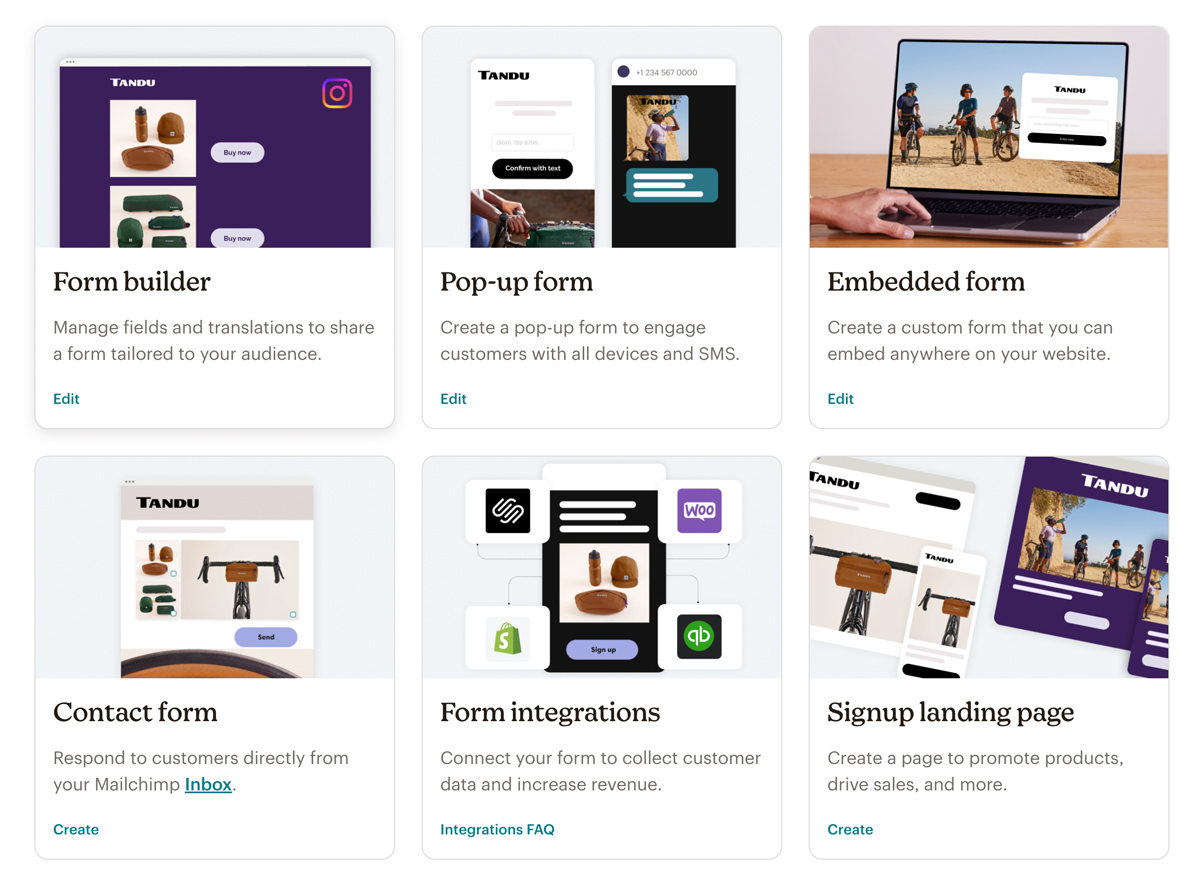
- By default, Signup Form should be selected in the Forms and Responses Emails dropdown. This is the form we’ll be editing.
- You’ll also notice the Signup Form URL. This is your unique link where the signup form is hosted. This link also comes in handy in that you can visit it while working on your signup form to see the latest changes.
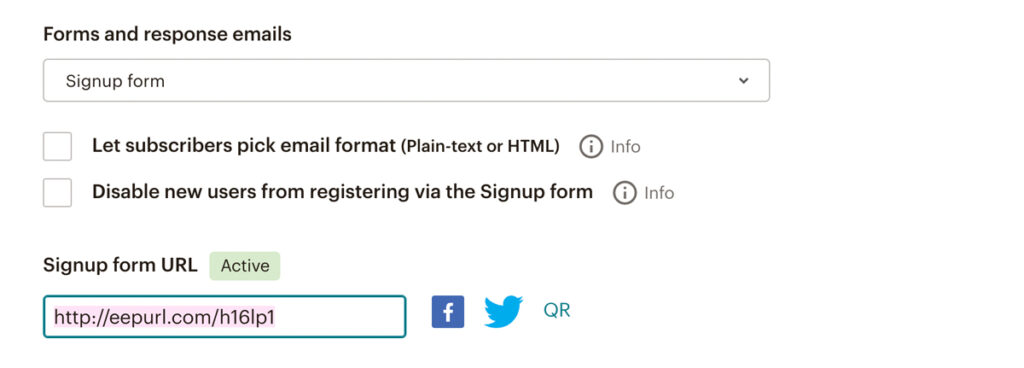
- Further down the page, you’ll see the default signup form that was created when you setup your Mailchimp account.
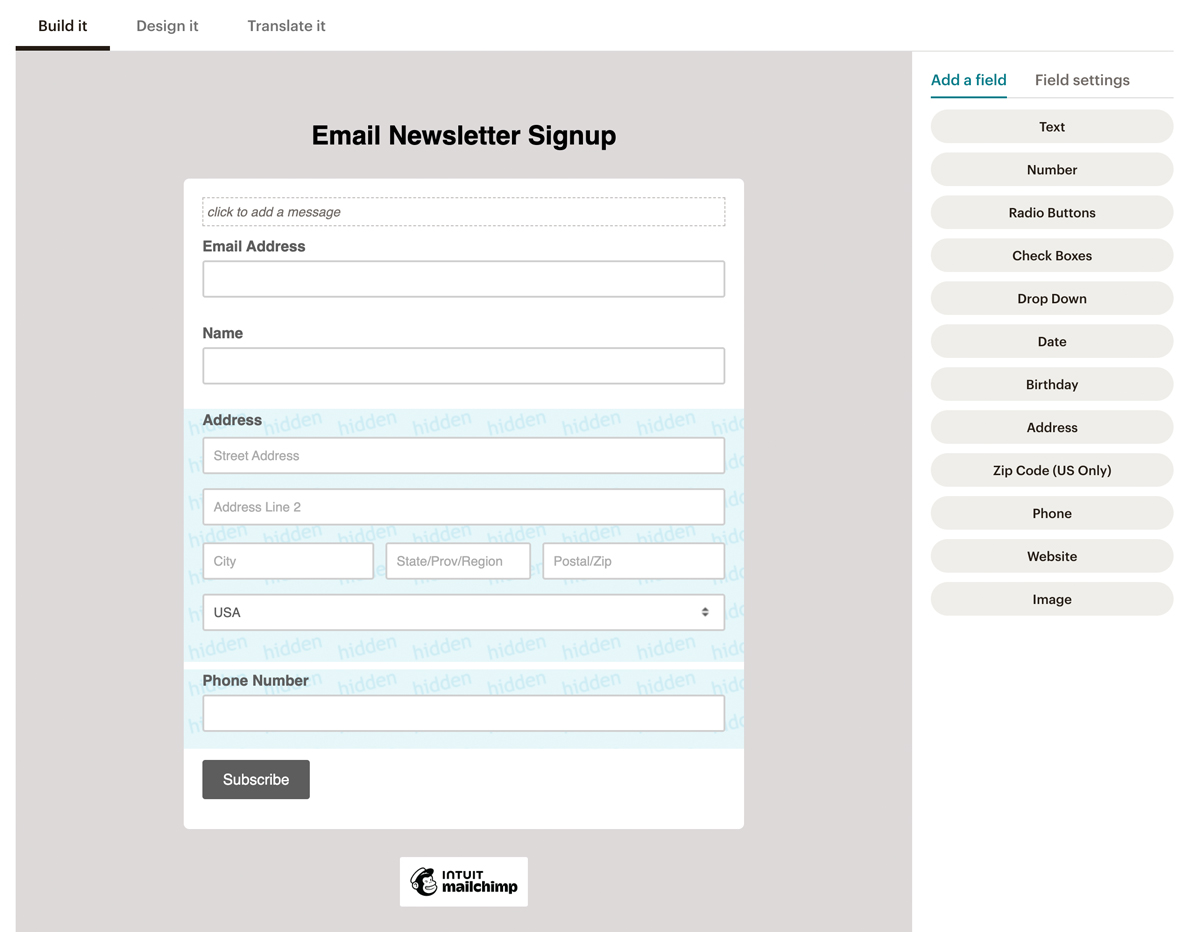
- To make changes to the title, simply hover over it and select one of the three options:
- Edit to alter the text
- Remove to remove the title completely
- Use Image to upload an image such as a logo
- You then have the option to add a message. This is a good place to add more information about your email list and what someone can expect once they signup. Include enticing messaging that outlines the type of value you typically include in your email campaigns such as exclusive deals, priority access to product launches, event invites, free material and so on.
- To edit an existing field, click on it and then make your changes under Field Settings. While editing a field, here are a few things to consider and what each element represents:
- Field Label: The bold title found above the field.
- Field Tag: The field tag is used to identify a piece of information that can be utilized when personalizing your email copy. In the screenshot below, FNAME represents your recipient’s first name. When creating an email campaign, you can insert their first name by saying “Hi, *|FNAME|*!” which, when opened by a recipient who has provided their first name, will appear as “Hi, Scott!”.
- Required Field: Check this box off if you want this field to be mandatory.
- Field Visibility: In most cases, you’ll want to select Visible so that your audience can see the field when filling out your signup form. There are, however, instances where you’ll want to keep a field Hidden. In the screenshot below, the Address and Phone Number fields are hidden. This is because, while you may want to track this information in your contact database, you may not want to include it on a simple signup form.
- Help Text: Use this area to add helpful information and details about the field. For example, if you use the Birthday field, people may wonder why you need that information. You could add text that explains you intend to send them a special gift on their birthday.
- Default Merge Tag Value: Remember the FNAME tag we mentioned earlier? The one you can use to personalize your email copy to call out someone by their first name? In this case, the Default Merge Tag Value outlines what should be used in the event that someone doesn’t enter their first name. If someone does not give their name, Mailchimp will use the word “Friend” instead.
- When you’re done making your changes, hit Save Field.
- To duplicate an existing field, simply click on it and hit Replicate at the bottom of the Field Settings area.
- To remove an existing field, click on it and hit the minus symbol. You can also hit Delete at the bottom of the Field Settings area. It’s very important to note that deleting a form field – whether it be visible or hidden – will delete all associated data in your list. It cannot be undone.
- To reorder any fields found on your signup form, simply drag and drop them into place. Keep in mind that you can preview your changes using your Signup Form URL found at the top of the Form Builder page.
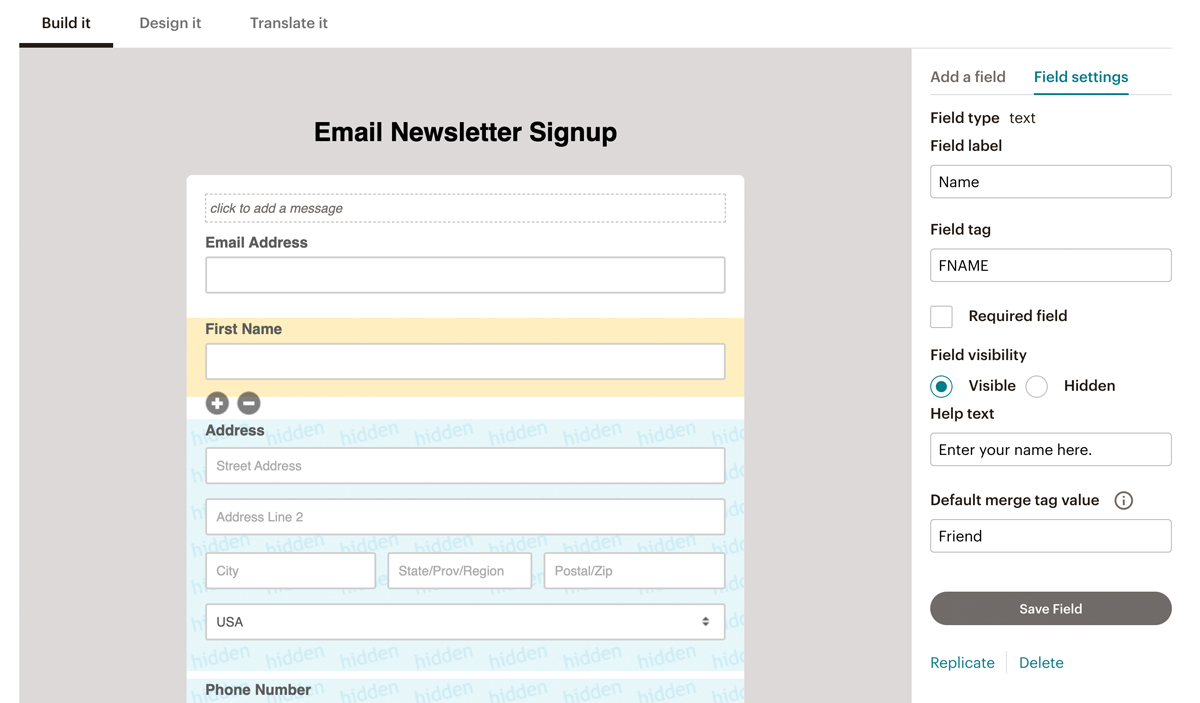
- To add a new field to your form, click on the Add a Field tab. Then, click on the type of field you’d like to add. In the example below, we will add Radio Buttons to help understand where a contact came from and how they found us.
- Under Field Settings, fill in all of the information (similar to the information outlined in step #8 above) including the Menu Options that a user can choose from. Then, hit Save Field to save your changes.
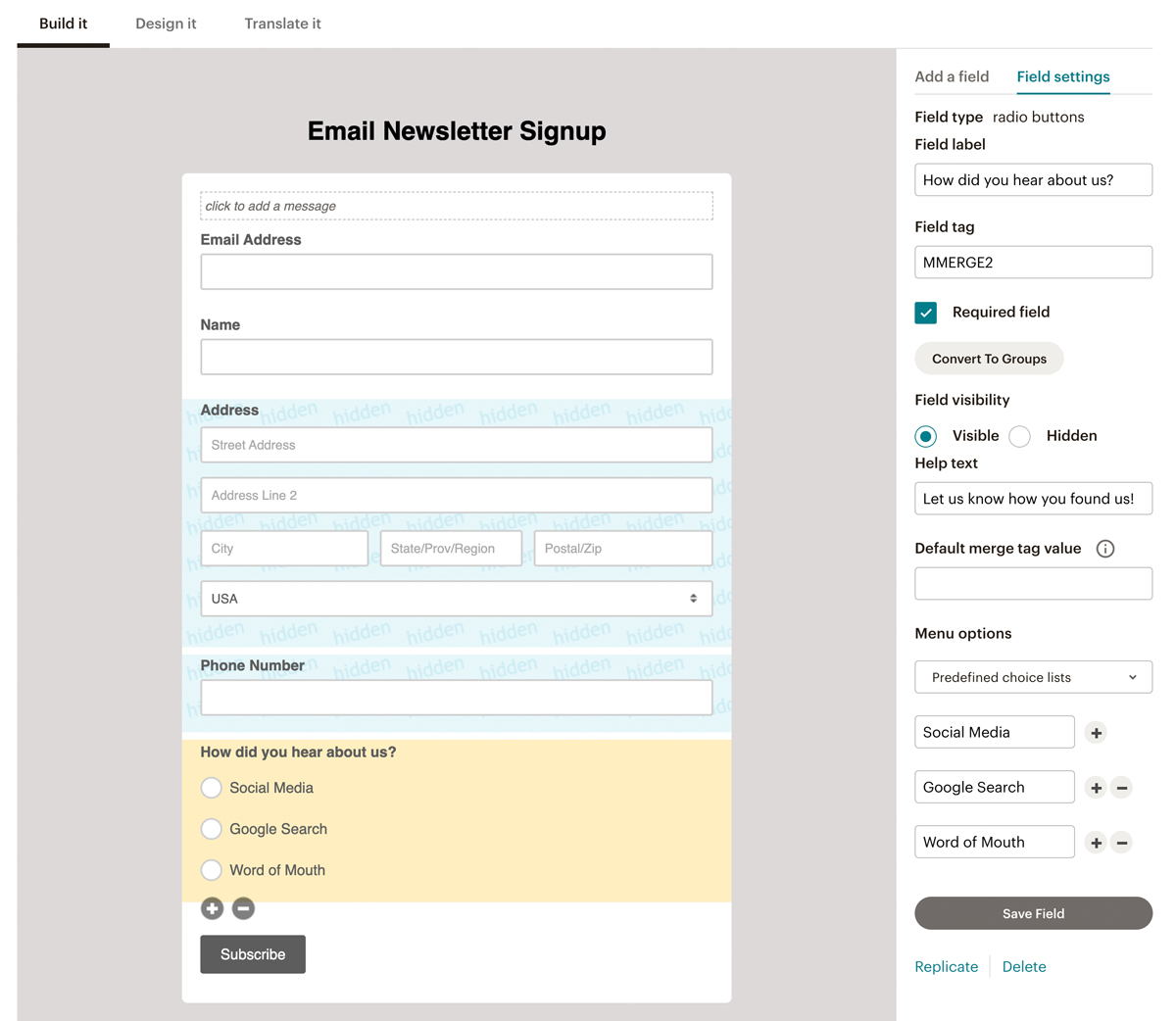
- Add as many fields as you’d like. Once you’re done, visit your Signup Form URL to see what your new form looks like. Remember that any Hidden fields will not be displayed on your live form.
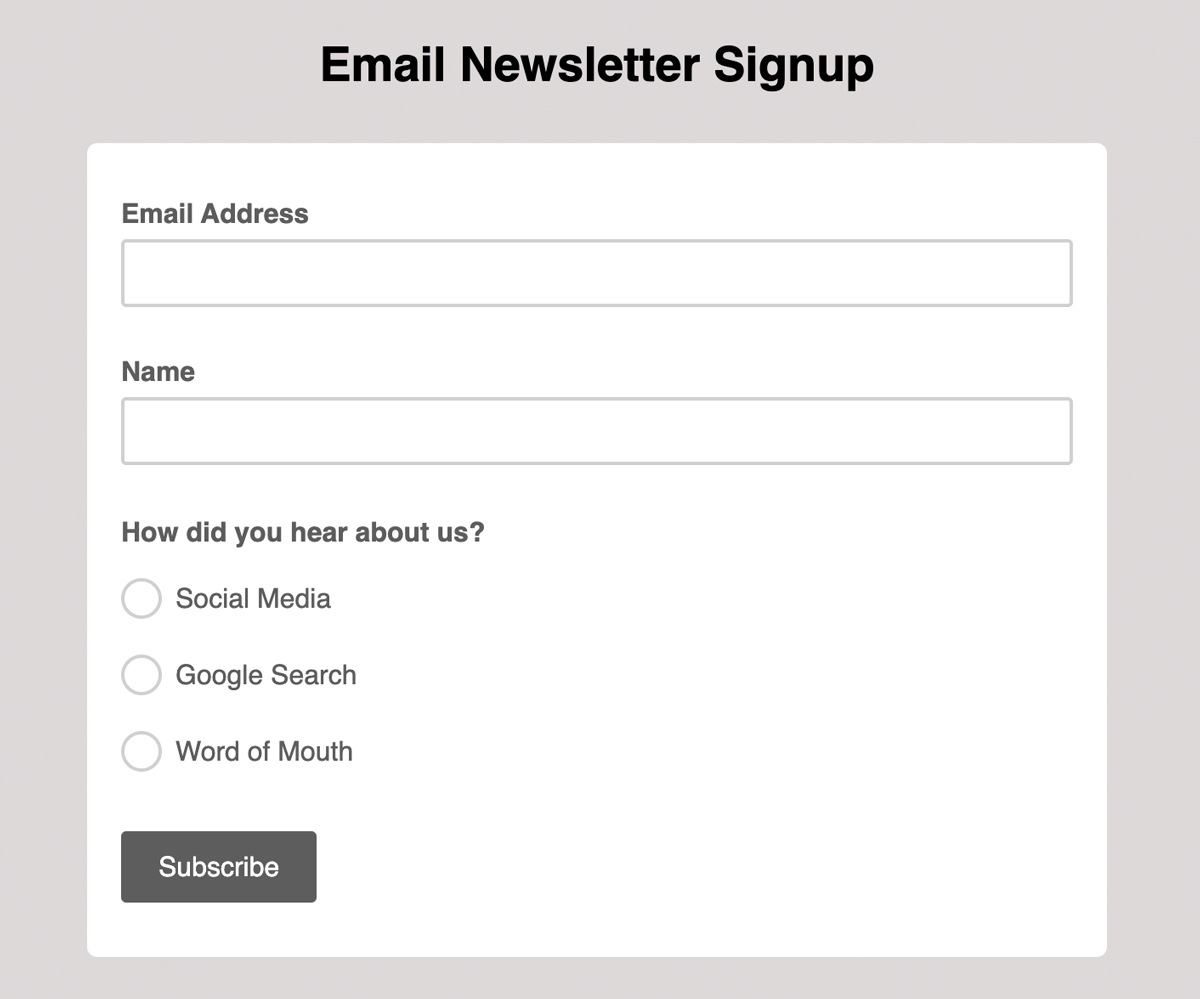
For more step-by-step tutorials, visit our Mailchimp Tutorials page. Plus, signup for our email newsletter below where we share hand-picked marketing resources and more!




